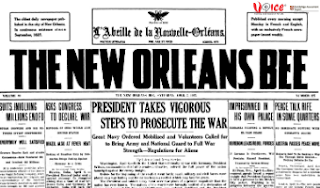LEVELS OF CAMBRIDGE ASSESSMENT ENGLISH
LEVELS OF CAMBRIDGE ASSESSMENT ENGLISH
The Common European Framework divides learners into three broad divisions that can be divided into six levels; for each level, it describes what a learner is supposed to be able to do in reading, listening, speaking and writing. The following table indicates these levels. A more thorough description of each level, with criteria for listening, reading, speaking, and writing,
Language activities
The CEFR distinguishes among four kinds of language activities: reception (listening and reading), production (spoken and written), interaction (spoken and written), and mediation (translating and interpreting).
Competences
A language user can develop various degrees of competence in each of these domains and to help describe them, the CEFR has provided a set of six Common Reference Levels(A1, A2, B1, B2, C1, C2).
A Basic user
A1 Breakthrough or beginner
· Can understand and use familiar everyday expressions and very basic phrases aimed at the satisfaction of needs of a concrete type.
· Can introduce themselves and others and can ask and answer questions about personal details such as where they live, people they know and things they have.
· Can interact in a simple way provided the other person talks slowly and clearly and is prepared to help.
A2 Waystage or elementary
· Can understand sentences and frequently used expressions related to areas of most immediate relevance (e.g. very basic personal and family information, shopping, local geography, employment).
· Can communicate in simple and routine tasks requiring a simple and direct exchange of information on familiar and routine matters.
· Can describe in simple terms aspects of their background, immediate environment and matters in areas of immediate need.
B Independent user
B1 Threshold or intermediate
· Can understand the main points of clear standard input on familiar matters regularly encountered in work, school, leisure, etc.
· Can deal with most situations likely to arise while travelling in an area where the language is spoken.
· Can produce simple connected text on topics that are familiar or of personal interest.
· Can describe experiences and events, dreams, hopes and ambitions and briefly give reasons and explanations for opinions and plans.
B2 Vantage or upper intermediate
· Can understand the main ideas of complex text on both concrete and abstract topics, including technical discussions in their field of specialization.
· Can interact with a degree of fluency and spontaneity that makes regular interaction with native speakers quite possible without strain for either party.
· Can produce clear, detailed text on a wide range of subjects and explain a viewpoint on a topical issue giving the advantages and disadvantages of various options.
C Proficient user
C1 Effective operational proficiency or advanced
· Can understand a wide range of demanding, longer clauses, and recognize implicit meaning.
· Can express ideas fluently and spontaneously without much obvious searching for expressions.
· Can use language flexibly and effectively for social, academic and professional purposes.
· Can produce clear, well-structured, detailed text on complex subjects, showing controlled use of organizational patterns, connectors and cohesive devices.
C2 Mastery or proficiency
· Can understand with ease virtually everything heard or read.
· Can summarize information from different spoken and written sources, reconstructing arguments and accounts in a coherent presentation.
· Can express themselves spontaneously, very fluently and precisely, differentiating finer shades of meaning even in the most complex situations.


Comments
Post a Comment